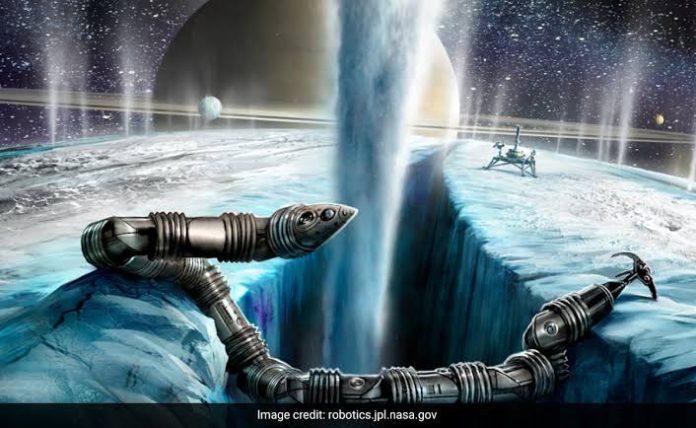The EELS “robot snake” is intended to independently freely ivestigate thinhospitable locations but can’t explore on Earth, Mars, and other planets.
A team at NASA’s Jet Propulsion Laboratory (JPL) is developing a snake-like robot that may one day explore Enceladus’ surface vents in search of underground waters.
The Exobiology Extant Life Surveyor, or EELS robot, is being developed, according to JPL, to autonomously map, travel, and explore locations that are otherwise unreachable on Earth, the moon, and other planets in the solar system.
The prototype was first developed by JPL teams in 2019 and has subsequently undergone numerous iterations. They started making changes to EELS’s hardware and software in 2022, as well as running regular field tests.
Using eight stereo cameras and lidar, EELS builds a 3D map of its surroundings for this purpose. The information from these sensors is used by navigation algorithms to choose the robot’s safest course. Engineers are putting up a “library” of motions that the robot can utilise to adapt to various terrains.
The team’s “banana” manoeuvre, in which the robot rotates itself, uses a sidewinding motion from this library. JPL anticipates the robot to contain 48 actuators, or tiny motors, in its finished configuration. Although this would provide EELS a great deal of flexibility, it would also make things more complicated for the hardware and software teams.
These 48 actuators are compared to “48 steering wheels” by Thakur. There will be built-in force-torque sensing in many of these actuators. The EELS can “feel” how much force is being applied to the area because this sensing functions like a thin layer of skin.


